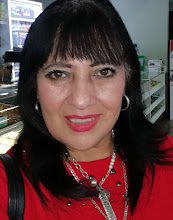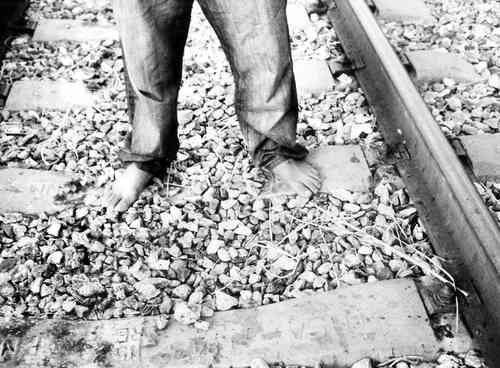UNA MUJER DE PAZ EN EL TRABAJO
"1000 LA MUJER DE PAZ"
A TRAVÉS DEl GLOBO
Honduras es un país roto por la desigualdad crónica que ha excluido a la gente joven del centro de oportunidades económica y cultural, forzándole entonces a sobrevivir en los márgenes de sociedad, con la violencia y la inescrutabilidad de las pandillas.
Con la fundación, en 1989, de XIBALBA, ITSMANIA PINEDA PLATERO creó un espacio y una oportunidad dónde las y los jóvenes, personas que tiene la probabilidad de cambiar sus vidas y canalizar sus energías artísticas en diferente proyectos socialmente beneficiosos. Con estas actividades pueden descubrir identidades nuevas, basadas, en la admiración y el respeto de la comunidad.
Durante su infancia en Comayagüela, en la periferia de Tegucigalpa Itsmania Pineda Platero formo parte de la expansión de las organizaciones jóvenes que son reconocidas por toda América Central por el nombre de maras. Esas hermandades fueron originadas en el Estado Unido como una reacción por la violencia relatada por los factores interétnicos y económicos que crearon estos en conflicto dentro de la comunidad migratoria.
Con la deportación de sus líderes y sus miembros, las pandillas se reproducen en sus territorios natales.
En 1989, junto con un grupo de artistas y activistas comunales, inhaló la "idea Maya del ser", como la de un laberinto del espíritu humano, es así como Itsmania fundó Xibalbá Arte y Cultura. La juventud de Honduras, despreciada y excluida por su forma de vestir y sus símbolos de pandillas, encontraron, en Xibalbá, un lugar para desarrollar su potencial creativo y cooperativo, participando, capaces para expresarse, mostrando sus sensibilidades, y respondiendo desde su interior para derretir la máscara de prejuicio público ellos dieron a la gente joven de Xibalbá un prestigio que viaja mucho más allá de lo nacional que al hondureño rodea.
En su libro "por qué se unió a las pandillas" Itsmania-Oficialmente nombrada por los Tribunales Hondureños como la única asesora experta, en la interpretación de tatuajes – y mas acercada a la dinámica de los jóvenes pandillas desde una vista panorámica, lo que ella gano debido a su experiencia privilegiada. El libro es como los estímulos inmediatos para los mecanismos internacionales de solidaridad y es considerado de valor inestimable para el campo de la sociología. "Si la gente joven se une en esta organizaciones, para dar una respuesta violenta a situaciones, también pueden juntos actuar en el orden del bien y responder con su arte ".
Desde el fin de 1980s, la gente joven, deportada por los Estados Unidos, encontró en sus países natales la misma situación de exclusión económica y persecución de policía tan encontradas en los EEUU. En defensa propia, reprodujeron las pandillas que se forjaron como una manera de supervivencia.
1000 MUJERES DE PAZ DEL MUNDO
DERECHOS RESERVADOS.
"1000 LA MUJER DE PAZ"
A TRAVÉS DEl GLOBO
Honduras es un país roto por la desigualdad crónica que ha excluido a la gente joven del centro de oportunidades económica y cultural, forzándole entonces a sobrevivir en los márgenes de sociedad, con la violencia y la inescrutabilidad de las pandillas.
Con la fundación, en 1989, de XIBALBA, ITSMANIA PINEDA PLATERO creó un espacio y una oportunidad dónde las y los jóvenes, personas que tiene la probabilidad de cambiar sus vidas y canalizar sus energías artísticas en diferente proyectos socialmente beneficiosos. Con estas actividades pueden descubrir identidades nuevas, basadas, en la admiración y el respeto de la comunidad.
Durante su infancia en Comayagüela, en la periferia de Tegucigalpa Itsmania Pineda Platero formo parte de la expansión de las organizaciones jóvenes que son reconocidas por toda América Central por el nombre de maras. Esas hermandades fueron originadas en el Estado Unido como una reacción por la violencia relatada por los factores interétnicos y económicos que crearon estos en conflicto dentro de la comunidad migratoria.
Con la deportación de sus líderes y sus miembros, las pandillas se reproducen en sus territorios natales.
En 1989, junto con un grupo de artistas y activistas comunales, inhaló la "idea Maya del ser", como la de un laberinto del espíritu humano, es así como Itsmania fundó Xibalbá Arte y Cultura. La juventud de Honduras, despreciada y excluida por su forma de vestir y sus símbolos de pandillas, encontraron, en Xibalbá, un lugar para desarrollar su potencial creativo y cooperativo, participando, capaces para expresarse, mostrando sus sensibilidades, y respondiendo desde su interior para derretir la máscara de prejuicio público ellos dieron a la gente joven de Xibalbá un prestigio que viaja mucho más allá de lo nacional que al hondureño rodea.
En su libro "por qué se unió a las pandillas" Itsmania-Oficialmente nombrada por los Tribunales Hondureños como la única asesora experta, en la interpretación de tatuajes – y mas acercada a la dinámica de los jóvenes pandillas desde una vista panorámica, lo que ella gano debido a su experiencia privilegiada. El libro es como los estímulos inmediatos para los mecanismos internacionales de solidaridad y es considerado de valor inestimable para el campo de la sociología. "Si la gente joven se une en esta organizaciones, para dar una respuesta violenta a situaciones, también pueden juntos actuar en el orden del bien y responder con su arte ".
Desde el fin de 1980s, la gente joven, deportada por los Estados Unidos, encontró en sus países natales la misma situación de exclusión económica y persecución de policía tan encontradas en los EEUU. En defensa propia, reprodujeron las pandillas que se forjaron como una manera de supervivencia.
1000 MUJERES DE PAZ DEL MUNDO
DERECHOS RESERVADOS.


